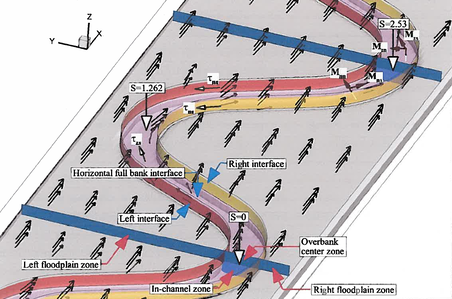Flooding Case Study
|
BACKGROUND
Flooding is one of the major natural disasters with devastating consequences. The application of numerical models to calculate the inundation and exerted forces of flood events is critical in developing mitigation plans. Computational Fluid Dynamics (CFD) is a group of numerical model techniques used to simulate flows in the most complete and accurate approach. CFD has been used extensively for mechanical and biomedical applications in the past. However, there is an increasing number of cases in which CFD is used to analyze environmental fluids as rivers, lakes, and air patterns. Also, CFD is used in specific engineering designs as channels, dams, piers, water reservoirs, and water treatment processes. |
MISSION STATEMENT
Study CFD method to compute flow distribution in flooding events.
CHALLENGE
Different one and two dimensional (1D and 2D, respectively) hydraulic program present different flow distribution in flooding events.
THE SOLUTION
We made use of CFD to analyze the flooding in meandering channels. We present results from two (2) CFD codes: Flow-3D and OpenFOAM.
THE RESULTS
CFD results will be able to produce consistent results between Flow-3D and OpenFOAM. The results served to analyze other results from 1D and 2D models to recommend the most appropriate codes for flooding event simulations.
Study CFD method to compute flow distribution in flooding events.
CHALLENGE
Different one and two dimensional (1D and 2D, respectively) hydraulic program present different flow distribution in flooding events.
THE SOLUTION
We made use of CFD to analyze the flooding in meandering channels. We present results from two (2) CFD codes: Flow-3D and OpenFOAM.
THE RESULTS
CFD results will be able to produce consistent results between Flow-3D and OpenFOAM. The results served to analyze other results from 1D and 2D models to recommend the most appropriate codes for flooding event simulations.






